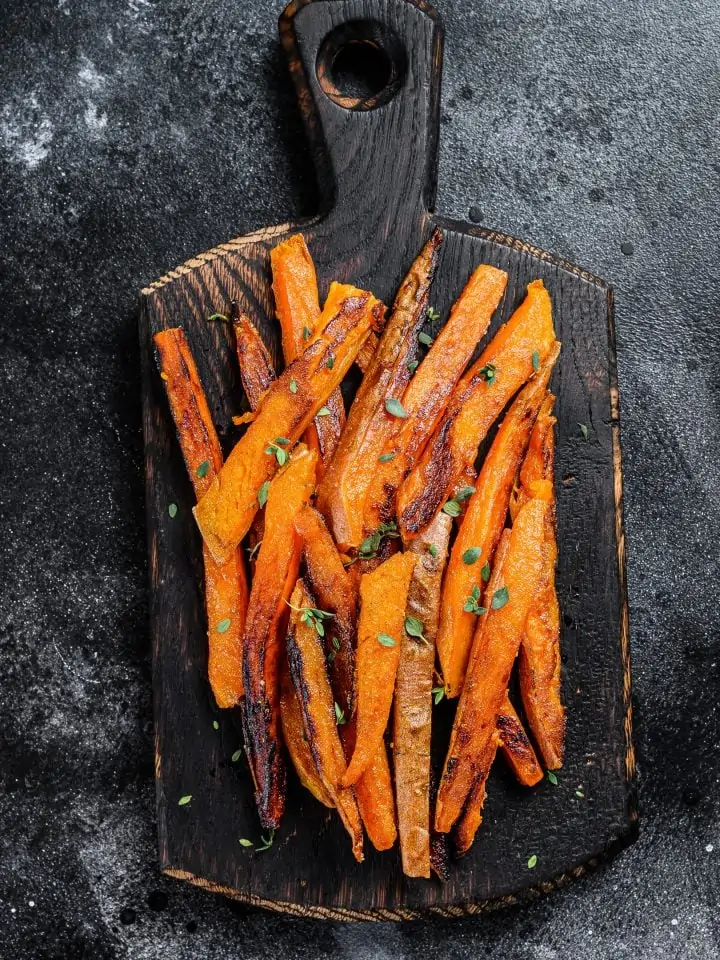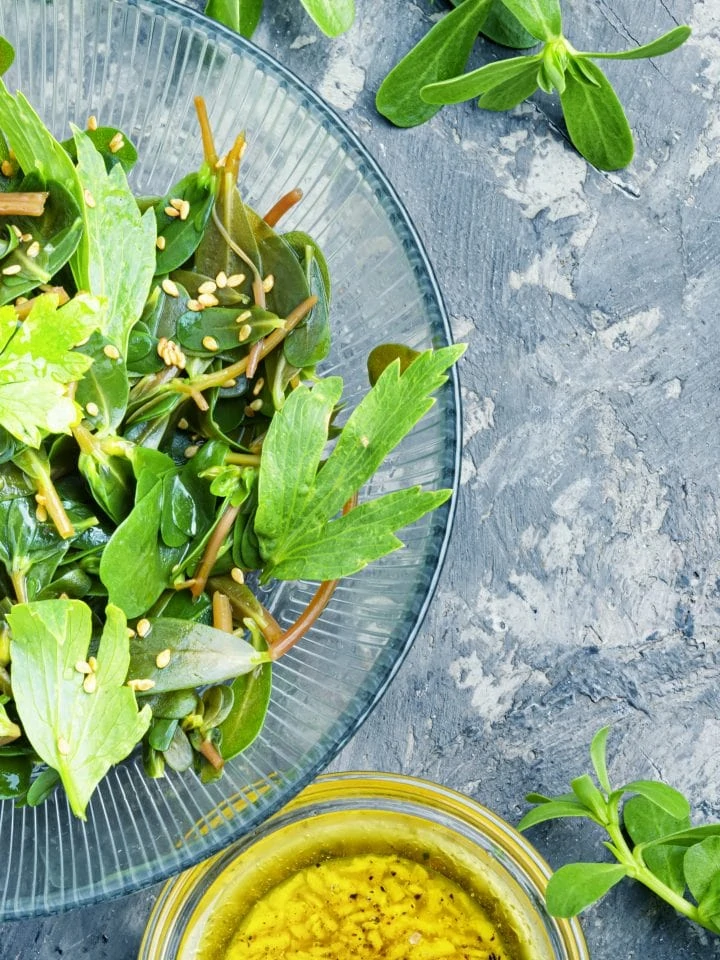If you struggle with unexplained allergies, skin issues, or digestive discomfort, a histamine intolerance might be the hidden cause. This condition occurs when the body accumulates too much histamine or experiences difficulty breaking it down efficiently.
Since histamines are involved in several body functions such as immune responses, digestion, and neurotransmission, an imbalance in their levels can lead to symptoms like hives, headaches, congestion, and bloating. While antihistamines can provide temporary relief, a more efficient approach is adjusting diet.
Low-histamine foods can help reduce symptoms and improve overall well-being. In this guide, we’ll explore the benefits of a low-histamine diet and the diverse foods that can decrease the risk of allergic reactions.
Jump to:
What is histamine intolerance?
Histamine is a chemical that is naturally produced by the body and found in certain foods. It plays an important role in brain function, immune response, and digestion. However, histamine intolerance occurs when histamine levels become too high or the body struggles to break it down. This happens when there is a deficiency in the enzymes histamine N-methyltransferase (HNMT) and diamine oxidase (DAO). These enzymes are responsible for breaking down histamine in the liver and intestines.
When the enzymes do not work efficiently, histamine accumulates in the body, triggering diverse allergy-related symptoms such as headaches, sneezing, migraines, skin reactions, nasal congestion, and skin irritations.
Why low-histamine foods?
A low-histamine diet is important for individuals with sensitivities or histamine intolerance as it can help reduce allergic reactions. Foods that are low in histamine can help prevent the build-up of histamine in the body, decreasing symptoms such as nasal congestion and hives.
Moreover, high levels of histamine in the body can affect digestion, causing diarrhea, bloating, and abdominal pain. A diet rich in low-histamine foods can help alleviate these symptoms and boost better gut health. In addition, certain foods may promote the activity of diamine oxidase (DAO), an enzyme that supports the breaking down of histamine in the body.
Managing histamine intolerance through a balanced diet loaded with beneficial foods can help improve overall well-being including promoting better sleep, reduced inflammation, and increased energy levels.
10 best low-histamine foods to reduce allergies

1. Chicken breast
Chicken breast is one of the top foods for a low-histamine diet. Since chicken breast is unprocessed, it remains low in histamine as long as it is consumed fresh. To preserve the low levels of histamine in chicken breasts, it is important to avoid processing or extended refrigeration. Chicken breast is particularly beneficial for individuals with histamine intolerance or allergies because it is gentle on the stomach.
Moreover, chicken breast contains high amounts of protein, which is important for immune function and muscle repair. It is also loaded with important amino acids that strengthen the immune system, decreasing the chances of excessive histamine release.
2. Quinoa
Quinoa is a gluten-free alternative for individuals with histamine intolerance. It is easy to digest, free from common allergens, and packed with many important nutrients that are beneficial for overall health. Unlike fermented grains, quinoa does not undergo any process that elevates its histamine levels, making it a suitable choice for anyone sensitive to histamine.
Quinoa is high in antioxidants and flavonoids that help decrease inflammation and boost immune balance, which is beneficial for people who experience allergies. The high fiber content in quinoa also supports good gut bacteria, which can help boost the regulation of histamine and decrease the symptoms of allergies.
3. Apples
Apples are one of the best fruits for people who cannot tolerate histamine. They contain powerful compounds that can help reduce the levels of histamine in the body. Apples are rich in quercetin, which possesses natural antihistamine qualities, helping to stabilize mast cells and preventing the excessive release of histamine. This helps to decrease symptoms such as itching and sneezing.
In addition, apples are rich in vitamin C and other crucial nutrients such as polyphenols and folate that can help the immune system ward off infections and reduce inflammation, decreasing symptoms associated with histamine. Apples also have a high water content, helping to keep the body hydrated.
4. Almond milk
Unlike fermented dairy products, pure and unsweetened almond milk does not trigger histamine levels. Almond milk is a smooth, non-dairy alternative that is easier to digest, reducing the risk of histamine release. It is rich in vitamin E, which is a natural antioxidant that helps to strengthen the immune system and eliminate oxidative stress.
Almond milk also contains monounsaturated fats that aid the regulation of cholesterol levels and promote cardiovascular health. When fresh without additives, almond milk remains low in histamine, which makes it a safe choice for individuals managing histamine intolerance.
5. Pears
Pears are loaded with vitamin C and polyphenols, which can help decrease oxidative stress and inflammation, both of which can make the symptoms of allergy worse. They are also loaded with important vitamins like vitamins B9 and K that can aid the regulation of immune responses and strengthen overall health.
Pears also have a high water content that makes them easy to digest and helps the body stay hydrated, making them ideal for individuals dealing with food sensitivities. Pears also contain both insoluble and soluble fiber that aids digestion and boosts gut health.
6. Kiwi
Kiwi is another low-histamine food that can aid in the alleviation of allergy symptoms. Kiwi is high in vitamin C, which can help stimulate the production of diamine oxidase (DAO), an enzyme responsible for breaking down excess histamine in the body. Due to its rich vitamin C content, kiwi can also help strengthen the immune system, reducing the risk of flare-ups.
Additionally, kiwi contains flavonoids that possess natural antihistamine qualities that can help decrease histamine levels in the body. Kiwi also contains digestive enzymes such as actinidin that promote a healthy microbiome, helping to maintain a balanced digestive system.
7. Cucumbers
With over 95% water content, cucumbers help to maintain hydration, which is crucial for flushing out excess histamine and decreasing other allergy symptoms.
Moreover, cucumbers are a natural source of silica, a compound that promotes skin health and aids in soothing skin irritation or rashes that might be caused by allergies. However, to maintain low levels of histamine in cucumbers, consume them fresh, as pickled or fermented cucumbers are high in histamine.
8. Lettuce
Lettuce is high in folate, which supports cell regeneration, immune function, and brain health. These benefits help the body respond better and more effectively to allergens. Lettuce also contains fiber, which aids digestion without causing irritation to the gut, making it a safe option for individuals with sensitive stomachs.
Furthermore, lettuce contains beneficial nutrients like vitamin K, which plays a major role in the clotting of blood and enhancement of bone strength. It also helps to promote immune function, helping the body to respond better to allergens.
9. Cod
Fresh mild cod is a safe low-histamine food when consumed fresh or frozen. Cod is rich in omega-3 fatty acids that possess strong anti-inflammatory effects that can help reduce allergy-related symptoms like nasal congestion and swelling. It is also packed with vitamin B12, which supports the functions of the nervous system and energy levels.
Cod is high in selenium, making it a great low-histamine food for boosting immune function and regulating allergic reactions. Another reason to consume cod is its high protein composition, which plays a major role in promoting tissue repair and decreasing the severity of allergic reactions.
10. Asparagus
Asparagus is a nutrient-dense vegetable that offers a variety of health benefits including support for immune function and histamine metabolism. It is an excellent source of vitamin B9, which supports methylation and histamine-N-methyltransferase (HNMT) activity, improving the body’s ability to break down histamine.
Asparagus also contains glutathione, a strong antioxidant that helps protect cells from oxidative stress that can affect the functions of enzymes, including histamine N-methyltransferase (HNMT) and diamine oxidase (DAO). Moreover, asparagus contains significant levels of vitamins E and C, making it a beneficial food for strengthening the body’s natural defenses against allergens.
Conclusion
Managing histamine intolerance requires making careful choices when it comes to diet. Incorporating low-histamine foods into your nutrition can significantly help to decrease allergy-related symptoms and support overall wellness. By consuming unprocessed and fresh foods like cucumbers, chicken breast, quinoa, asparagus, cod, and pears, you can naturally reduce the build-up of histamine while improving digestion, alleviating inflammation, and boosting immune system function.

A writer passionate about wellness, nutrition, and intentional living. She creates engaging, research-based content that empowers readers to live healthier lives. Through every article, she brings clarity, inspiration, and a touch of everyday practicality. Read more about Juliana.







Comments
No Comments